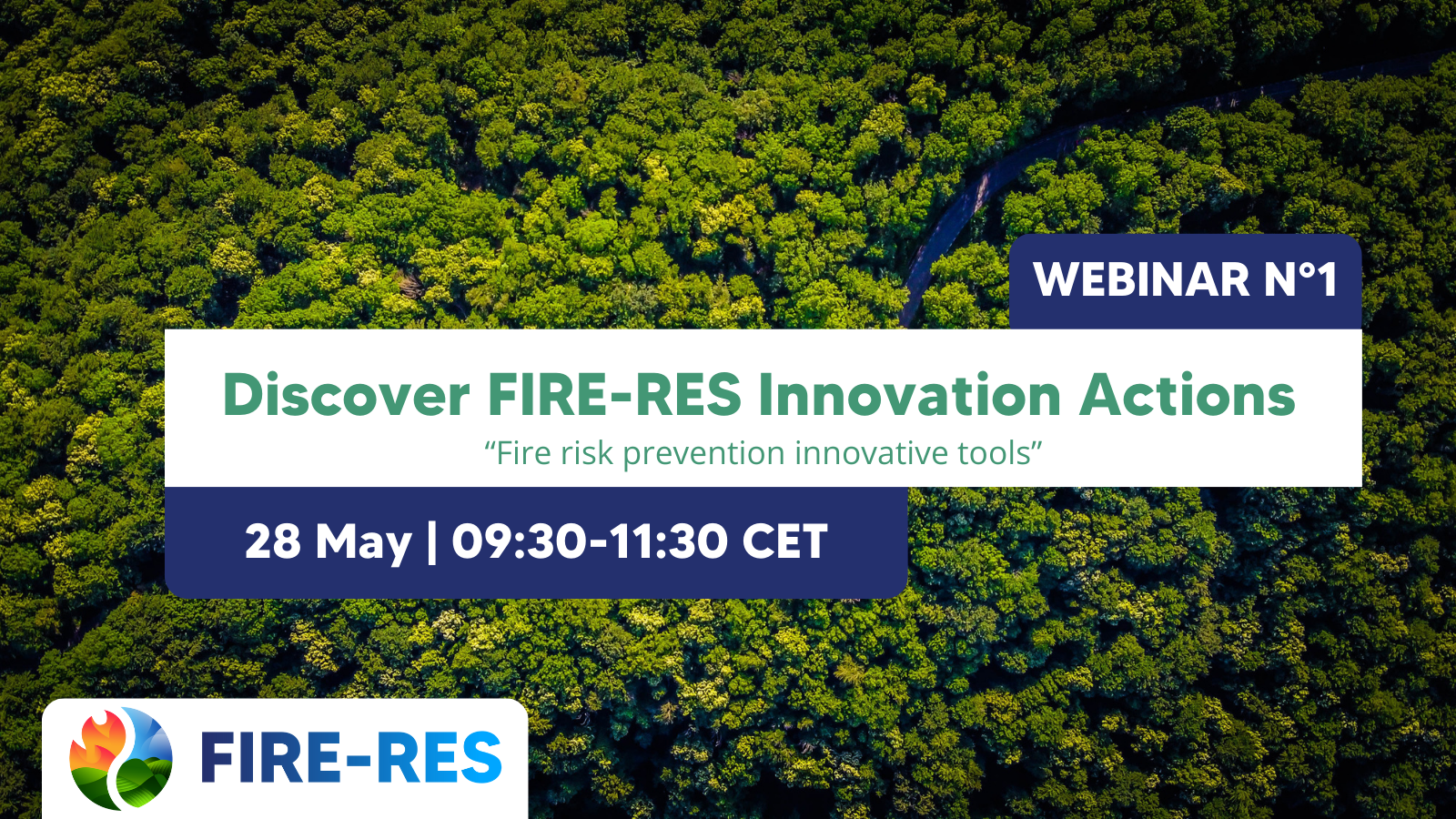IA 2.2 Scheduling and implementing novel management practices
OVERVIEW
What kind of result is this? | A report on how to create landscapes that are resistant to EWE taking a holistic approach. The report will include 1) the parametrization of management options for implementing adaptive forest treatments, aiming to enhance landscape resistance against EWE; 2) a criteria report for LUC from forest to woody crops, a map identifying suitable areas for wildfire prevention, and an economic analysis, with an added emphasis on social considerations and, 3) a methodology and cost analysis for optimal operations of forest fuel reduction, addressing various vegetation and environmental scenarios as well as guidelines for best practices. | |
What’s the area addressed? | Ecosystem Conservation and Landscape design | |
What’s the covered phase? | Prevention and Preparedness | |
What’s the addressed challenge? | The goal is to enhance landscape resistance by introducing novel management practices and adaptive management options. The focus is on designing pre-fire landscapes that are less susceptible to the occurrence of EWE. | |
What value is proposed? | It provides a comprehensive framework for informed decision-making in forest management, considering ecological, economic, and social aspects. | |
Who can use it? | Administration, forest planners, policymakers, and managers | |
What type of tool is it? | Methodology | |
How does it look like? | Report | |
This tool is… | ☐ a new tool | ⊠ an improved tool |
What are the vision & mission statement? | This IA will develop a methodology for parameterising forest management options to create resistant landscapes for EWE. The application of the methodology will result in a database of potential fire behaviour before and after different treatments for different forest types for cost-effective evaluation of novel management alternatives. The IA will contribute with a methodology to assess crop suitability in mountainous areas. This will guide in the process of selecting more adequate land parcels that contribute to EWE resistance while enhancing local economy and landscape mosaic. Also, the socioeconomic analysis will highlight main barriers and impacts towards the LUC. The IA will reduce the costs of preventive silviculture operations (fuel removal) compared to the current systems. This will be achieved with a combination of higher efficiency and maximum value recovery for the by-products of the operations. A lower cost per hectare will allow to treat a larger share of the fire-prone areas with the same financial resource | |
When will it be complete? | May 2024 | |
Documentation | TBA | |
This IA is implemented in the Living Lab(s)… | ||
Media coverage of the I.A.

FIRE-RES Innovation Actions: Webinar N°1
The European Institute for Planted Forest (IEFC) is hosting a series of webinars to introduce the project’s Innovation Actions to the public. The first session will showcase highlights and results
Contact

Gianni Picchi
- Consiglio Nazionale delle Ricerche (CNR)
- gianni.picchi@cnr.it;

Adriano Raddi
- Forest Science and Technology Centre of Catalonia- Centre de Ciència i Tecnologia Forestal de Catalunya (Spain)
- adriano.raddi@ctfc.cat

Míriam Piqué
- Forest Science and Technology Centre of Catalonia- Centre de Ciència i Tecnologia Forestal de Catalunya (Spain)
- miriam.pique@ctfc.cat

Jordi Corbera
- Head of Catalan Earth Observation Centre Institut Cartografic de Catalunya
- jordi.corbera@icgc.cat
OVERVIEW
The content is currently work in progress and will be updated as soon as possible.
Contact

Gianni Picchi
- Consiglio Nazionale delle Ricerche (CNR)
- gianni.picchi@cnr.it;

Adriano Raddi
- Forest Science and Technology Centre of Catalonia- Centre de Ciència i Tecnologia Forestal de Catalunya (Spain)
- adriano.raddi@ctfc.cat